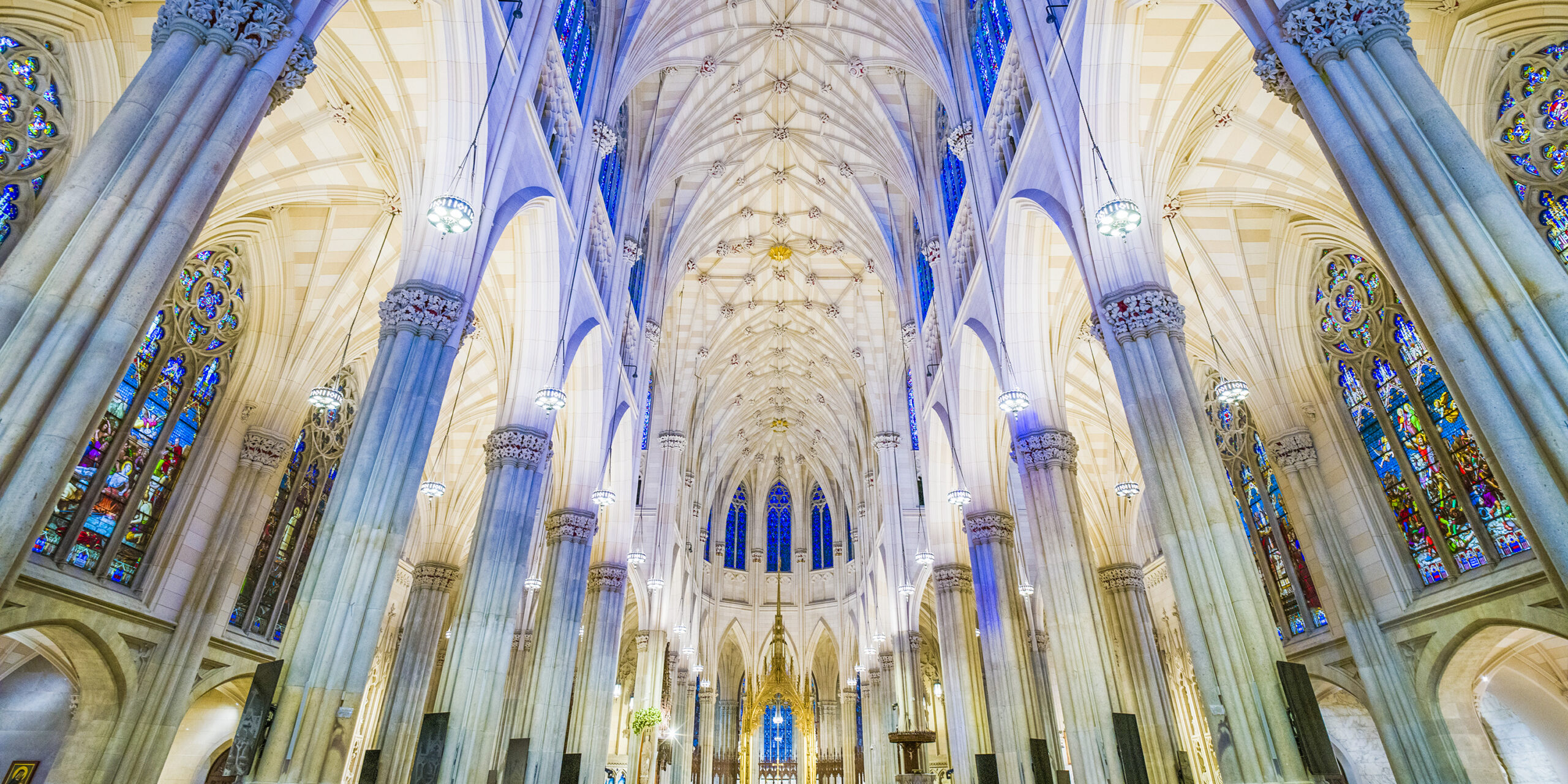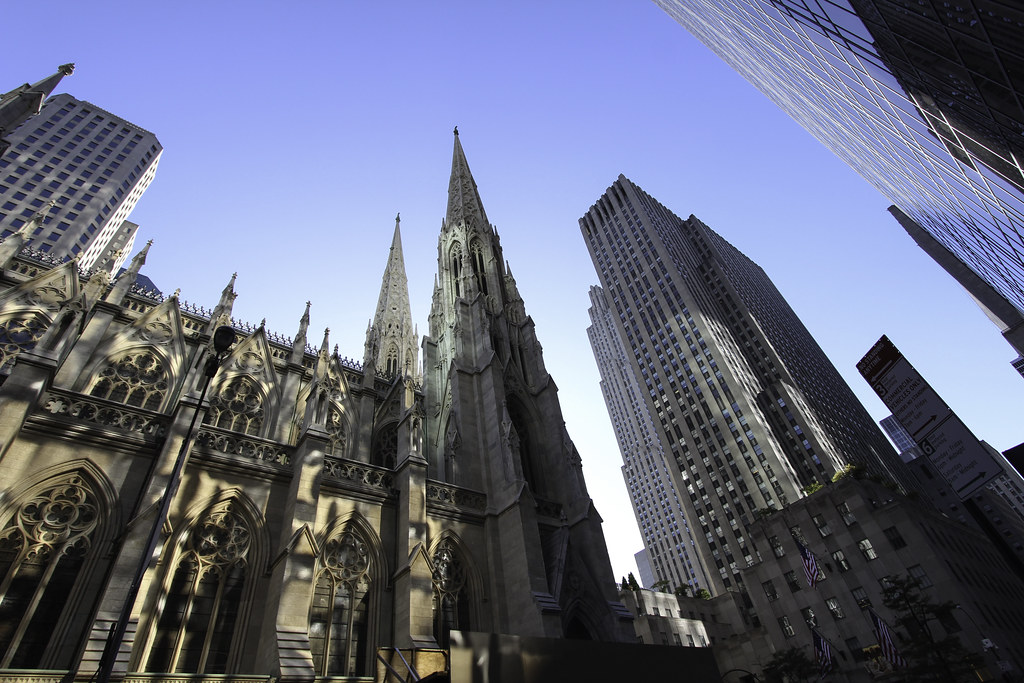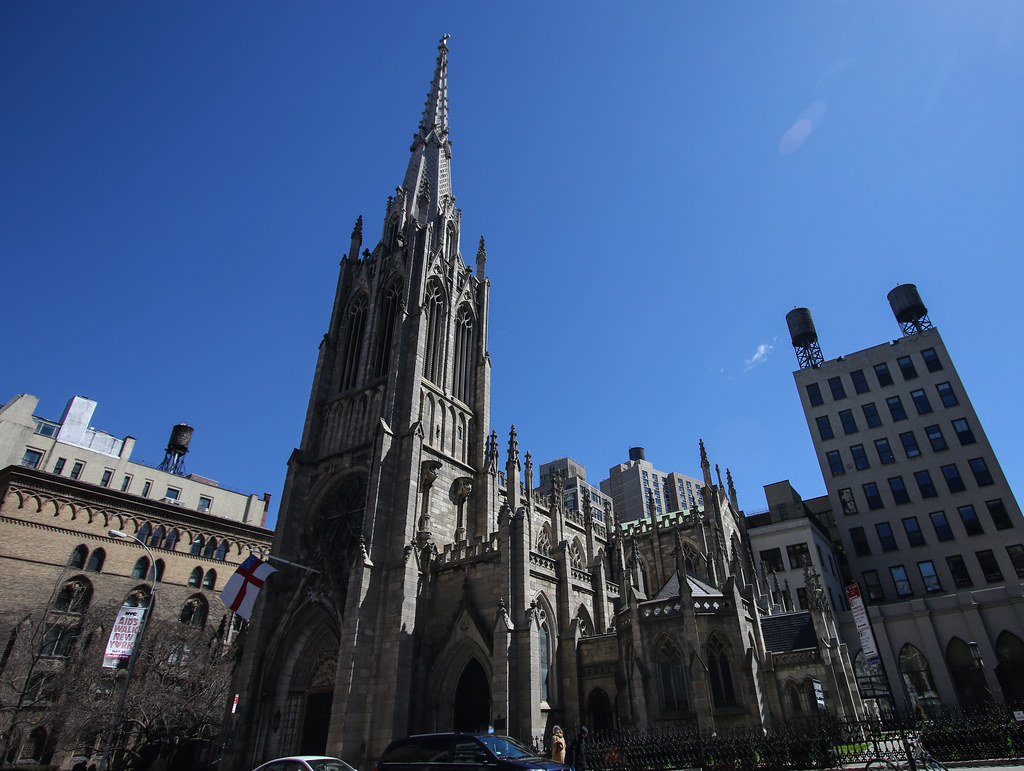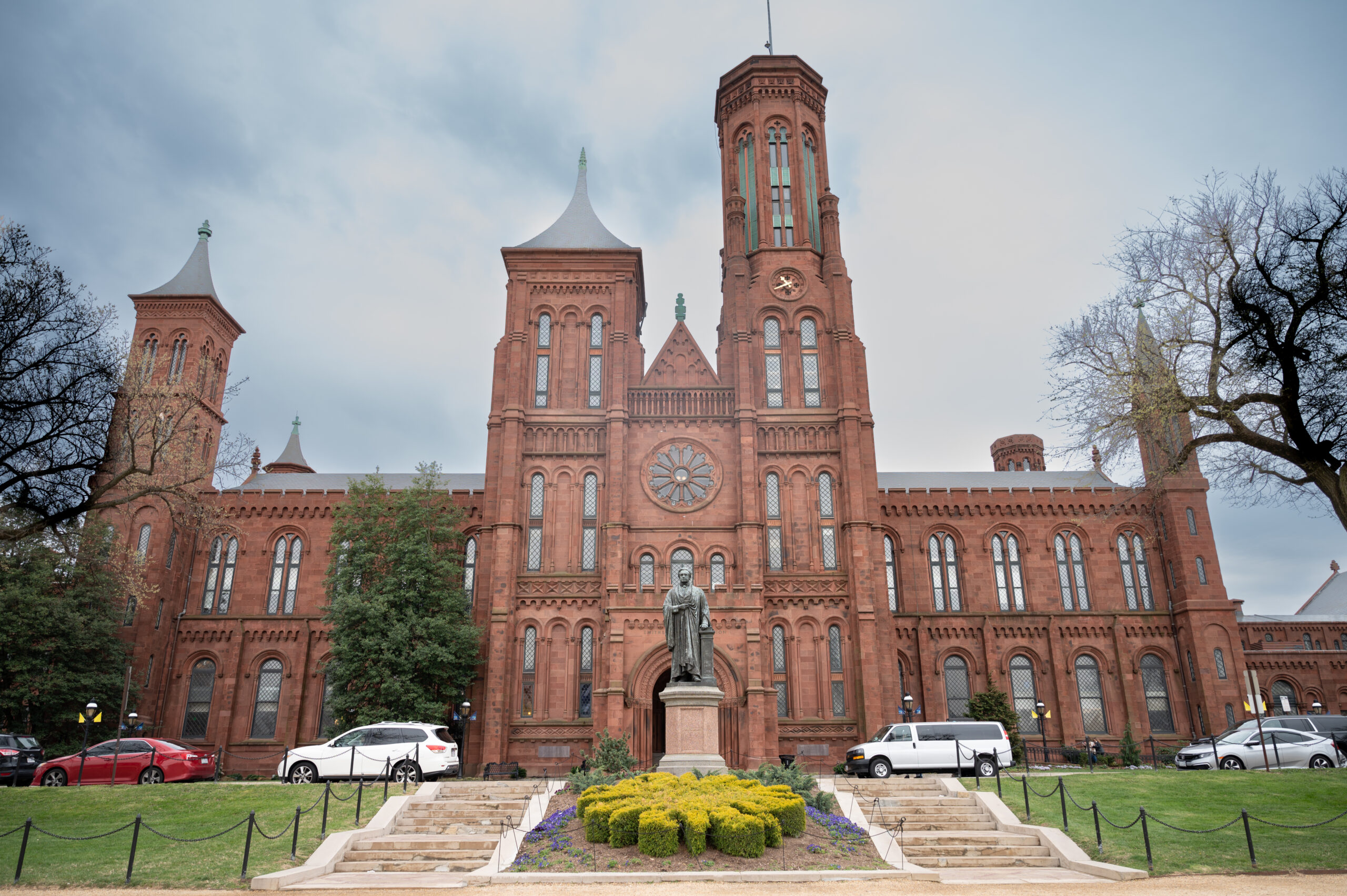Big cities around the world have their own special building styles and history. In New York City, there’s a hidden world of Gothic architecture. This style takes you back to old times with beautiful churches and detailed work. Gothic architecture in NYC is full of charm and mystery.
You can find many buildings like this in the city, telling stories of the past. When we look closer at Gothic Revival, we see strong arches, interesting gargoyles, and beautiful stained glass windows. They remind us of a time when beauty and belief were very important.
Unveiling the Charm of Gothic Architecture in NYC
American Gothic Architecture is quite distinct from its European counterpart, as the Gothic Revival movement reintroduced the Neo-Gothic style during the Romanticism era. This captivating architectural style graced city skylines both in Europe and the United States, creating a wealth of artistic wonders.
For instance, New Haven’s Trinity Church, an early example of Gothic Revival architecture in the United States, ignited interest in Neo-Gothic design and subsequently spread to New York City. Notable landmarks, such as the Shepard Hall of City College of New York and St. John the Divine Cathedral, showcase this intriguing stylistic blend on the NYC cityscape.
NYC’s Gothic Revival architecture is characterized by its tales and memories, which provide a fascinating glimpse into a romanticized past where elegance and grandeur were viewed as enlightening. Let’s take a closer look at some of the key features typical of American Gothic Architecture:
| Feature | Description |
|---|---|
| Pointed arches | Arches with a sharp apex, frequently found in doorways and windows |
| Ribbed vaults | Intersection of two-to-three barrel vaults, providing structural support and architectural interest |
| Flying buttresses | External support structures that transfer the weight of walls and roofs to the ground, permitting the use of large expanses of stained glass |
| Pinnacles and finials | A variety of decorative features adorning the upper parts of the exterior, often serving as anchor points for flying buttresses |
| Gargoyles and grotesques | Sculptures and carvings, typically of fantastical creatures, often used as waterspouts or purely for decoration |
| Ornate detailing | Complex carvings, tracery, and other decorative elements, giving a sense of refinement and sophistication |
Beyond these defining elements, Gothic Revival architecture in NYC incorporates a certain mystique in its design, resonating with a broader cultural exploration into the unknown depths of history. The stories brought to life through these buildings continue to enchant and educate new generations, as they stand as reminders of a bygone era filled with architectural creativity and innovation.
Gothic Revival: NYC’s Architectural Renaissance
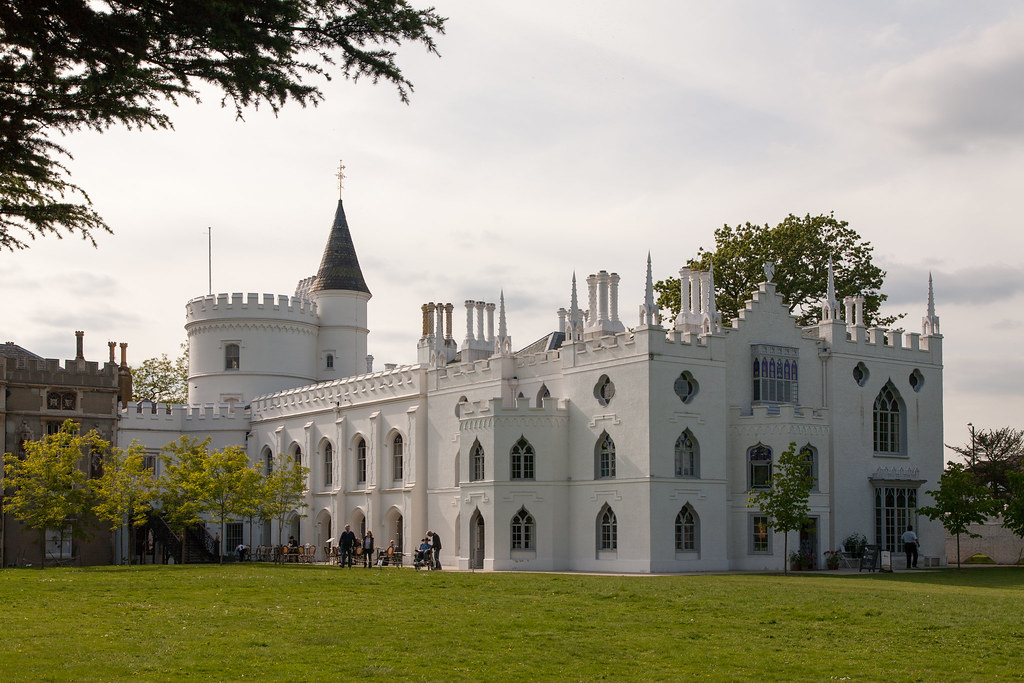
Neo-Gothic architecture found its renaissance in NYC through Romanticist values, originating from medieval Europe and revitalized in the 18th-century by enthusiasts like Horace Walpole. Strawberry Hill House is recognized as the pivotal structure that sparked the Gothic Revival movement which spilled over to the United States.
The Origins and Influences of the Neo-Gothic Wave in Gothic Architecture in NYC
The inception of the Neo-Gothic wave that swept through the architectural landscape of NYC, a pivotal hub for gothic architecture in America, can be traced back to Trinity Church in New Haven. This early example of Gothic architecture in America set a precedent for the city’s architectural evolution. The significant structure of Trinity Church paved the way for new landmarks designed in the Neo-Gothic style, which ultimately reflected NYC’s architectural renaissance. This movement, deeply rooted in the principles of traditional Gothic architecture, brought a revival of medieval aesthetics to the modern urbanscape of New York City, blending the old with the new in a unique and captivating way.
Richard Upjohn and James Renwick: Pioneers of the NYC Gothic Movement
Richard Upjohn and James Renwick were instrumental as pioneers of NYC’s Gothic Revival movement, impacting the architectural scene with their faith-driven dedication and innovative approach. Their combined efforts led to the design and construction of significant landmarks like Grace Church and St. Patrick’s Cathedral, which have become lasting symbols of the Neo-Gothic style in America.
- Richard Upjohn: With his British roots, Upjohn’s designs were heavily influenced by the Gothic architecture styles of Europe, evident in his contributions to the development of Gothic Revival architecture in the United States.
- James Renwick: An American architect and a fresh graduate of Columbia University, Renwick incorporated innovative elements to his designs, ultimately establishing himself as a pioneer of the Gothic Revival movement in New York City.
| Architect | Notable Work | Year |
|---|---|---|
| Richard Upjohn | Trinity Church | 1846 |
| James Renwick | St. Patrick’s Cathedral | 1858 |
| Richard Upjohn | Grace Church | 1846 |
| James Renwick | Smithsonian Institution Building | 1855 |
In conclusion, the rebirth of Gothic architecture in NYC reflects the city’s continual fascination with romanticized elements from medieval Europe. Pioneering architects Richard Upjohn and James Renwick played significant roles in shaping the Neo-Gothic wave and, by extension, the architectural renaissance of a city enriched with history and aesthetic value.
The Icons of Gothic Elegance in Manhattan’s Urbanscape
Manhattan’s urbanscape boasts a remarkable array of iconic Gothic architecture, ranging from the historical magnificence of Trinity Church to the stylish sophistication of the Dakota apartments. This diverse collection of structures stands as a testament to the lasting allure of Gothic and Neo-Gothic design and underscores NYC’s distinguished reputation as a city steeped in both historical and aesthetic intrigue.
Among the many examples of Gothic architecture in NYC, the following locations encapsulate the essence and timeless charm of Manhattan’s most unforgettable landmarks:
- Trinity Church
- Federal Hall National Memorial (Gothic Architecture House)
- The Dakota Apartments
In order to appreciate the true impact of these iconic structures on Manhattan’s urban landscape, let’s delve deeper into each of these architectural masterpieces.
Trinity Church
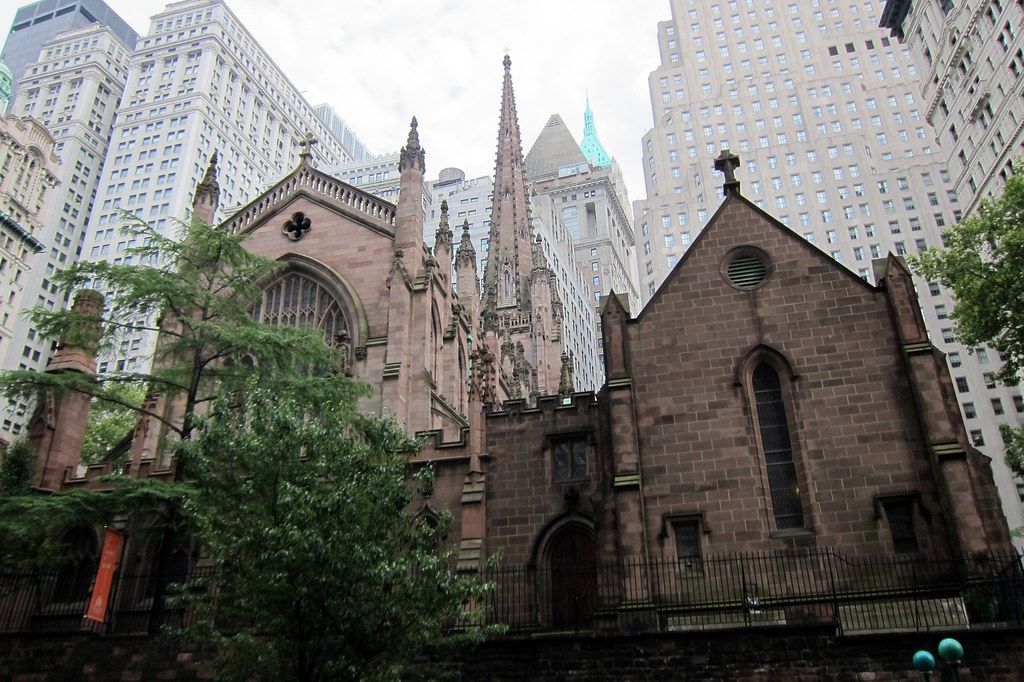
Situated at the intersection of Wall Street and Broadway, the awe-inspiring Trinity Church is a prime example of Gothic Revival architecture in NYC. Designed by renowned architect Richard Upjohn, this magnificent structure features an imposing tower, pointed arches, and an abundance of intricate detailing. Rich with history and a steadfast symbol of the ever-evolving Manhattan skyline, Trinity Church secures its place as an enduring icon of architectural prowess.
Federal Hall National Memorial
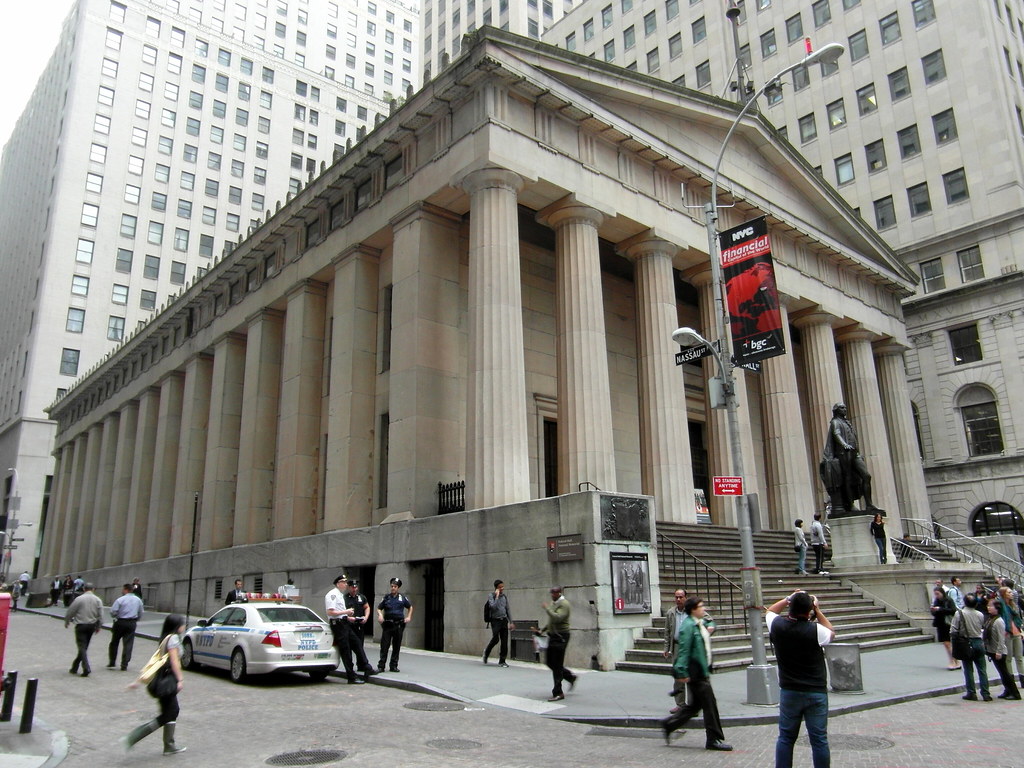
Originally the nation’s first capitol, the Federal Hall National Memorial serves as a striking representation of Gothic architecture in NYC within a house-like structure. Located on Wall Street, this impressive building boasts a combination of Greek Revival and Gothic architectural elements, including grand columns and dramatic archways. A treasured piece of American history and a notable example of gothic architecture in NYC, Federal Hall stands proudly as an emblem of the nation’s early days and architectural heritage.
The Dakota Apartments
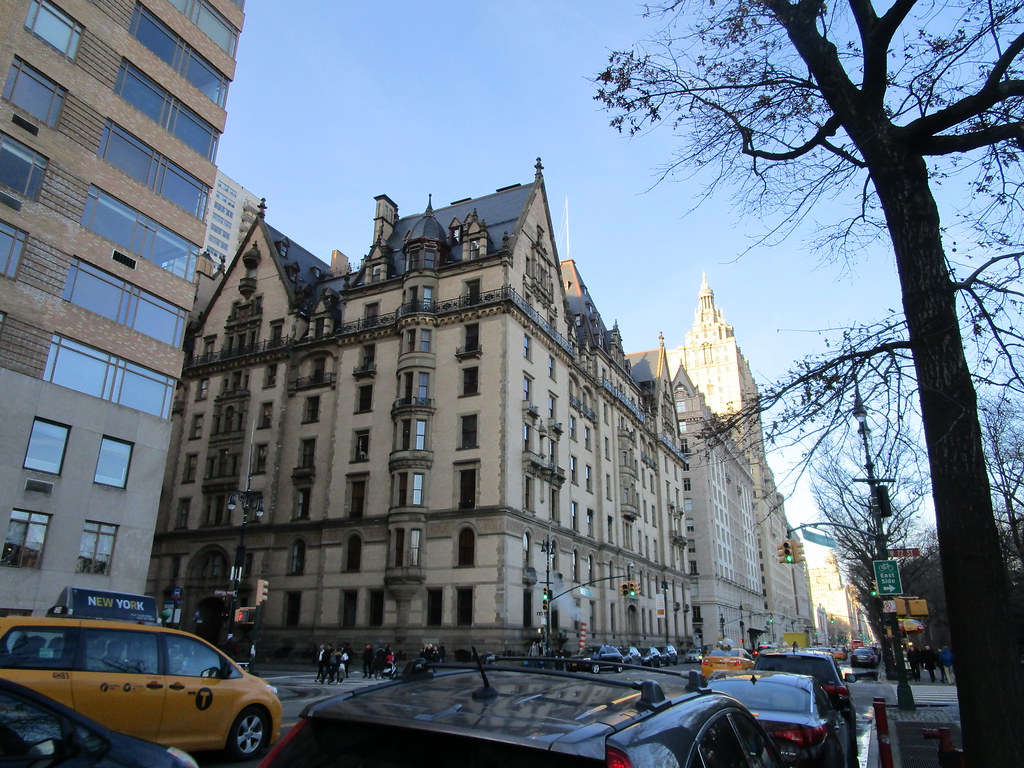
Nestled on the corner of Central Park West and 72nd Street, the Dakota Apartments exude a sense of luxury amidst Manhattan’s bustling streetscape. Famed for its remarkable façade and high-profile residents, this lavish residential building incorporates elements of German Renaissance and Gothic styles. The Dakota’s stunning exterior and opulent design features contribute significantly to its status as a desirable and highly sought-after landmark within the city.
In conclusion, Manhattan gothic architecture enriches the city’s landscape with hallmark structures that merge historical prowess and artistic ingenuity. The captivating fusion of Gothic and Neo-Gothic design elements within Trinity Church, Federal Hall National Memorial, and the Dakota Apartments serve as enduring testimonies to Manhattan’s diverse and storied architectural legacy.
Cathedrals and Colleges: Gothic Architecture’s Havens
The City College of New York stands as a prime example of Gothic architecture’s lasting legacy in NYC. Featuring Shepard Hall with its cathedral-like facade, the campus exemplifies the grandeur and masterful execution of Gothic Revival in its preservation of history and design.
City College of New York’s Gothic Masterpieces
City College of New York, located in Hamilton Heights, showcases the true essence of Gothic architecture in NYC with its prominent Shepard Hall. Designed by architect George B. Post, the building displays a cathedral-like facade, punctuated by pointed arches, intricate carvings, and grand spires. This architectural gem, adorned with numerous ornamental sculptures, stands as a testament to the city’s rich Gothic architectural heritage and the significance of preserving historical structures.
The Spiritual and Scholarly Edifices of Upper Manhattan
Upper Manhattan’s Hamilton Heights and Morningside Heights districts are home to spiritual and scholarly edifices that display the grandiosity of Gothic architecture in NYC. With a concentration of Neo-Gothic styled structures, these neighborhoods underscore the movement’s influential reach in the city. Institutions like Columbia University, St. John the Divine Cathedral, and Riverside Church reflect the impact of this architectural style on NYC’s educational and religious landscape, showcasing the enduring legacy of gothic architecture in NYC.
Some notable examples include:
- The Cathedral of St. John the Divine in Morningside Heights, which blends Byzantine, Roman, and Neo-Gothic architectural themes
- Riverside Church, a Neo-Gothic style masterpiece and the tallest church in the United States
- Columbia University’s St. Paul’s Chapel, a stunning example of Neo-Gothic architecture with its stained glass windows and exquisite arches
Majestic Interiors: St. John the Divine and St. Patrick’s Cathedral
The interiors of the Cathedral of St. John the Divine and St. Patrick’s Cathedral feature impressive dimensions, intricate stained glass, and religious sculptures that have attracted countless admirers across the globe.
| Location | Architect | Completion Year | Interior Features |
|---|---|---|---|
| Cathedral of St. John the Divine | Ralph Adams Cram | 1941 | Soaring vaulted ceilings, stained-glass windows, and combination of Byzantine, Roman, and Neo-Gothic themes |
| St. Patrick’s Cathedral | James Renwick Jr. | 1878 | Groined vaults, Victorian stained-glass windows, and impressive dimensions with the capacity to accommodate 2,400 worshipers |
These exceptional examples of Gothic architecture in NYC serve as a reminder of the style’s romantic glorification and its enduring appeal in the city’s architectural landscape. The preservation and appreciation of these structures ensure that the legacy of Gothic architecture prevails for generations to come.
The Woolworth Building: A Gothic Skyscraper Tale

The Woolworth Building, an iconic NYC skyscraper, narrates a unique story of Gothic Revival scaling new heights in the realm of gothic architecture in NYC. Designed by Cass Gilbert and once titled the tallest building in the world, the structure fused Neo-Gothic elements with the grandiosity of skyscraper design, evident through its ornate vaulted ceilings and mosaic detailing. This gothic skyscraper in NYC stands as a testament to the fusion of traditional gothic architecture and modern innovation.
| Year | Height | Architect | Design Style |
|---|---|---|---|
| 1913 | 792 feet (241 meters) | Cass Gilbert | Neo-Gothic |
In addition to its stunning exterior, the Woolworth Building boasts a breathtaking interior. The lobby, featuring a vaulted ceiling with a mosaic of colorful glass, leaves visitors awestruck. Furthermore, sculptural elements depicting the building’s namesake, Frank W. Woolworth, as well as the architect, Cass Gilbert, can be found within the lobby, infusing the space with a sense of history and appreciation for those who pioneered its design.
- The Woolworth Building: A Neo-Gothic architectural marvel in the heart of NYC
- Cass Gilbert’s vision: Fusing gothic architectural elements with a modern skyscraper
- Ornate details: From terracotta ornaments to mosaic glass ceilings
- Standing the test of time: The Woolworth Building’s continued relevance in the architectural world
As a monument to the timeless appeal of gothic architecture, the Woolworth Building continues to captivate both locals and visitors, leaving an indelible impression as a true symbol of both NYC’s past and present. With its soaring height and intricate design, this gothic skyscraper signifies the adaptability of traditional architectural styles and their lasting impact on contemporary urban landscapes.
Preserving History: The Continual Relevance of Gothic Architecture
Gothic architecture in NYC serves as a testament to the style’s enduring appeal and relevance. Even as modern buildings rise up around them, these structures narrate unique historical tales and inspire future generations of architects and admirers. The careful preservation of these historic gems not only underscores their significance but also ensures that Gothic architecture in NYC continues to captivate the architectural world by showcasing an era of romantic glorification and providing a picturesque backdrop to the city.
Preserving Gothic architecture in NYC is crucial not only for its aesthetic value but also for its impact on the city’s diverse urbanscape. As structures ranging from cathedrals and colleges to skyscrapers and houses display elements of Gothic and Neo-Gothic design, the city’s rich history and architectural elements are continually appreciated and celebrated. The ongoing recognition and maintenance of these structures contribute immensely to New York City’s status as an architectural haven, drawing countless visitors and locals alike to marvel at its elegance and grandeur.
The preservation and restoration of these priceless monuments ensure that the Neo-Gothic relevance remains alive, permeating the architectural scene in NYC and influencing innovative designs. Through initiatives led by both public and private entities, the city continues its commitment to safeguard its architectural legacy, blending the past’s romance with the present’s innovations to create a timeless urbanscape in NYC, reflecting the city’s resilience and its ever-adaptable spirit.
FAQ
What is Gothic architecture?
Gothic architecture is a style originating from medieval Europe, characterized by features such as steeply pitched roofs, intricate stained glass, pointed arches, and gargoyle adornments. This style saw a revival in the form of Gothic Revival, which reintroduced many of these elements into design during the Romanticism era.
How did Gothic Revival architecture emerge in NYC?
NYC’s Gothic Revival movement emerged in the mid-1800s, drawing inspiration from European influences and buildings such as the Abbey Church of Saint-Denis in France. The city’s skyline was transformed with the construction of iconic buildings such as the Shepard Hall on the City College of New York’s campus and St. John the Divine Cathedral, showcasing a blend of Neo-Gothic style elements.
Who were the key figures in NYC’s Gothic Revival movement?
Richard Upjohn and James Renwick were two pioneering architects who played a significant role in New York City’s Gothic Revival movement. Some of their most notable works include extensively designing and constructing landmark buildings such as Trinity Church, Grace Church, and St. Patrick’s Cathedral.
Where can you find examples of Gothic architecture in NYC?
Examples of Gothic architecture in NYC can be found throughout the city, including the Federal Hall National Memorial, Dakota Apartments, and historic Trinity Church. Additionally, the City College of New York and Columbia University showcase a notable concentration of Gothic Revival architecture in their campus buildings.
What makes the Woolworth Building an iconic example of Gothic architecture in NYC?
The Woolworth Building, designed by Cass Gilbert, is an iconic example of Gothic Revival architecture applied to a skyscraper. Once the tallest building in the world, it features Neo-Gothic elements such as ornate vaulted ceilings and mosaic detailing, showcasing the grandiosity of the style in a unique and striking way.



